Postmodernism in the interior
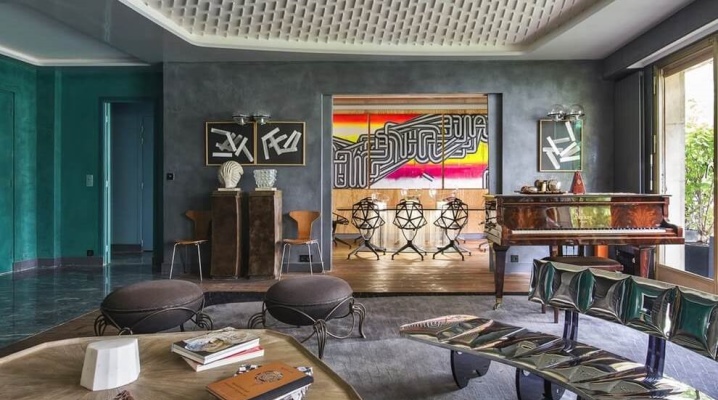
Many owners of spacious modern apartments and studios, who are not ready to put up with the routine of classics or minimalism in their home, want to learn how to properly decorate the interior in the style of postmodernism. Indeed, having chosen ultra-modern solutions for decoration, you can not be afraid of boredom. The features of the postmodern style in the design of houses and apartments will allow you to create a comfortable, bright space that energizes and gives a feeling of comfort.
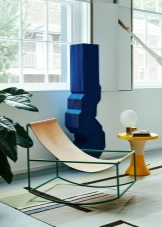
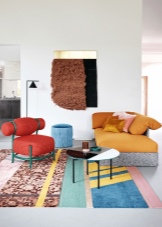
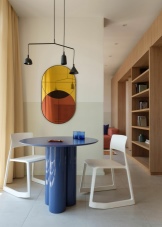

Distinctive features
Postmodernism is a style in which there is no place for strict frames. It is very diverse and fits perfectly into completely different cultural and architectural traditions. Postmodernity looks especially good in modern urban housing, devoid of strict framework: a free layout allows it to be embodied the main concept is the principle of zoning by mixing textures and colors. A house or apartment decorated in this style will emphasize the non-trivial taste of its owner.
After all, postmodernity is the rebellious 60s of the XX century, an ironic and catchy style with clear lines and contrasts.
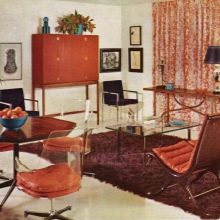
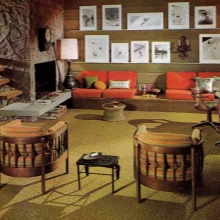
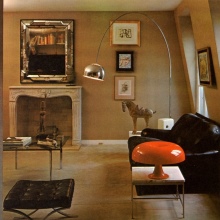
The concept of the style lies in its bohemianness. Interiors in the spirit of postmodernism have always been preferred by the creative elite. Bold color combinations with a predominance of pearlescent, fluorescent, metallic elements are appropriate here. Particular attention is paid to the form. It provides for smooth transitions, spirals and wavy lines are actively used in the design of the ceiling, the boundaries of the walls.
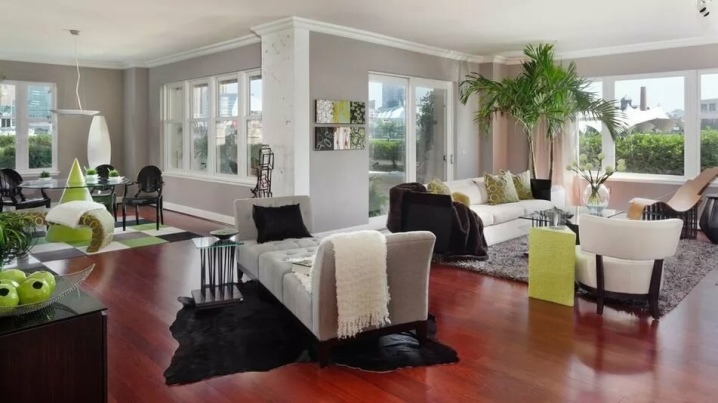
Contrasts are often used in postmodernism. For example, the zoning of a kitchen in a studio apartment is due to the contrast of colors and textures. Additional separation occurs due to glass partitions and screens.
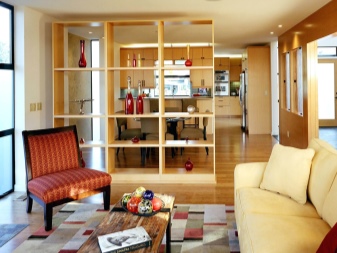
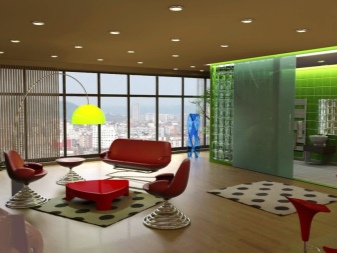
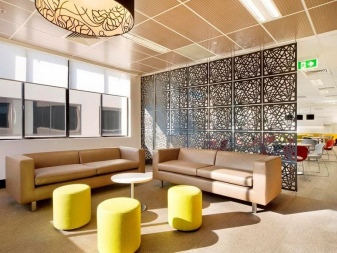
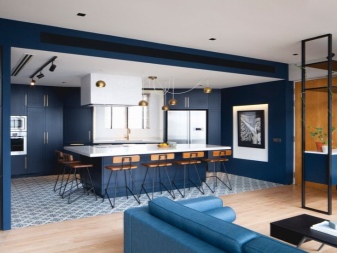
Finishing options
There are certain rules in interior decoration that make it possible to clearly declare its belonging to postmodernism. Among the important features that define this concept are the following.
- Walls as an art object. Most often they are made monochromatic: lilac, turquoise, grassy green, canary yellow - bright, but framing the setting, and not dominating it. Accent design using elements of graffiti and street art is also acceptable. Bare concrete, emphasizing the concept of marginal art, natural stone in gray colors look interesting.
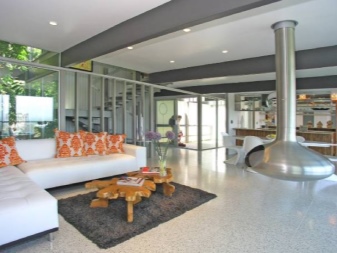
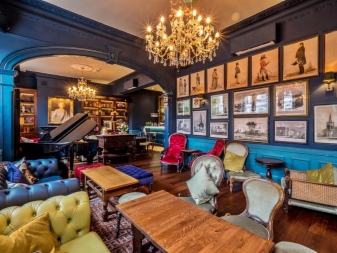
- Emphasis on architecture. Multilevel ceilings, niches, wall inserts, transparent screens and partitions - all this allows you to enhance the effect of the chosen stylistic solution. Vinyl gloss, transparent plastic and other elements borrowed from pop art culture are especially often used in decoration here.
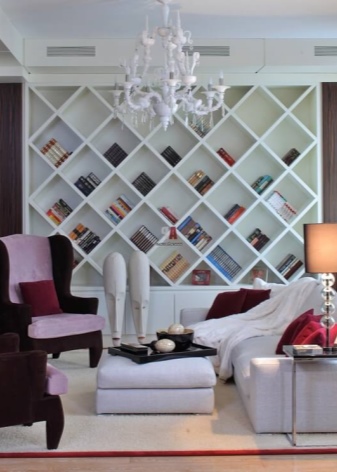
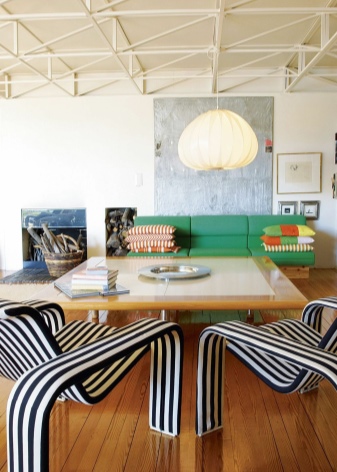
- Lack of femininity. Postmodernity was born in the era of male dominance in art. Ruches and bows, too feminine colors and prints in furniture upholstery, boudoir motifs are inappropriate here.
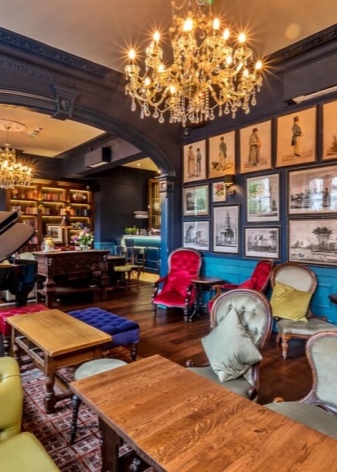

- Floor finishes with clear geometry. Depending on the type of premises, it can be tiles, parquet, laminate, parquet board. Preference is given to herringbone or checkerboard pattern. In general, the imitation of parquet is traditional here, collecting disparate elements into an overall picture.
On plain flooring, you can use a bright, accent carpet with asymmetry or clear geometry.
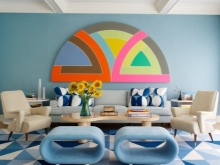
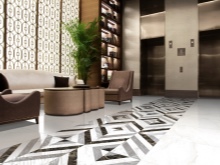

- Bright details of regular geometric shapes. Posters, pillows, pictures without frames in the spirit of cubism - these are the details that make the interior more characteristic.

- Simple and functional furniture. Most often it is wooden, plastic, metal, with strict geometry and bright upholstery. Large corner sofas, low tables, swivel or bar chairs. It is important that there is not too much furniture. It should not clutter up the space.
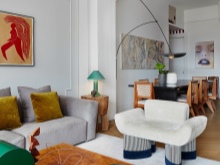
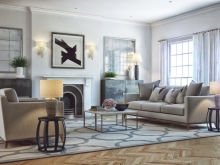
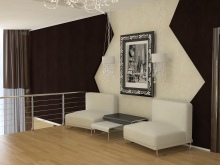
- Abundance of light. First of all - due to the lack of walls, free planning. In the house, this illusion is helped by floor-to-ceiling French windows, in city apartments - panoramic glazing.
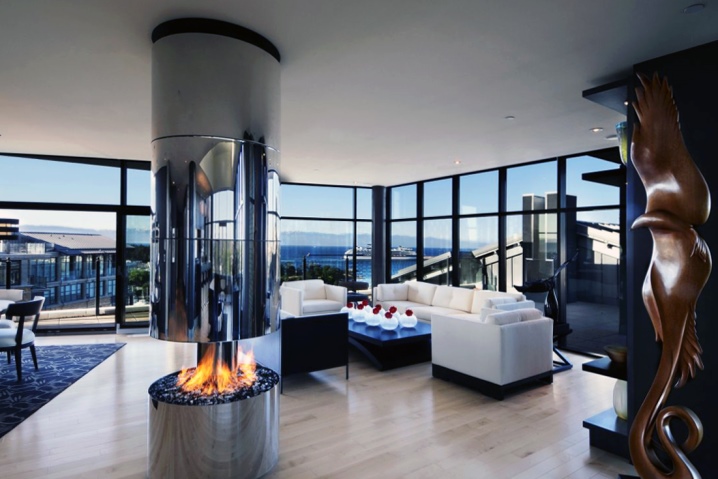
These are the basic decoration recommendations that are relevant for any premises. But there are also some subtleties that should be considered when choosing decor options.
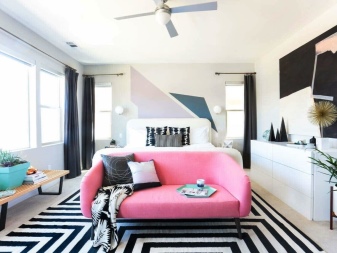
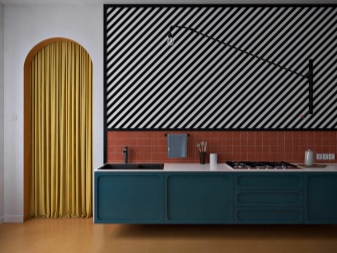
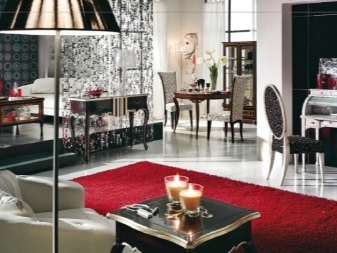
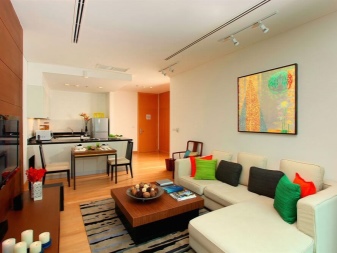
How to decorate the interior of different rooms?
The design of the interior space in the postmodern style changes depending on the room.
- Usually fresh pastel background colors are chosen for the bedroom: bleached mint, soft lemon, violet, lilac. The backlight can only be present on the ceiling, within the framework of a multi-level structure. A low bed made of rough wood is installed on a podium or in a niche.
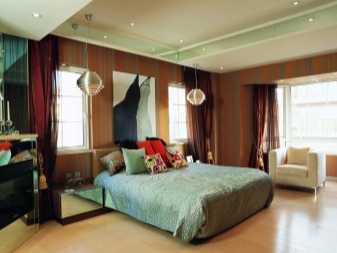
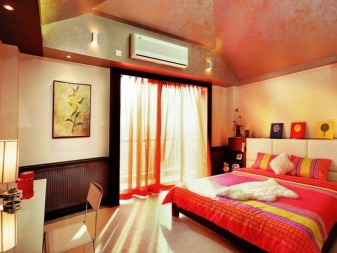
- The living room is often decorated in pure white. (milky, creamy) or anthracite black, with contrasting monochrome furniture, light wood floors and bright posters. The use of mirror elements that break the geometry of the space helps to enhance the impression.

- Bathrooms, bathrooms are finished with tiles from floor to ceiling - monochromatic or two-color, with clear patterns and shapes. Here you can use unusual "honeycomb" - hexagonal elements. Design options for plumbing equipment are welcome, round-shaped fonts standing in the center of the room, large windows.

- The kitchen also has its own characteristics. A tiled floor is welcome here, you can choose an option with an imitation of a parquet board. Bright accent walls and furniture are complemented by contrasting aprons. The dining area is often decorated with unusual furniture, reminiscent of a children's designer.
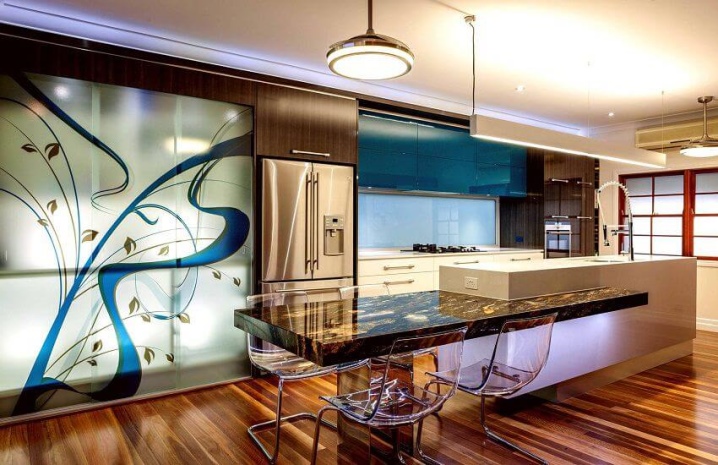
Beautiful examples
Motives of space design, traditional for postmodernism with a clear division into functional zones, they are well traced here even in the absence of partitions.
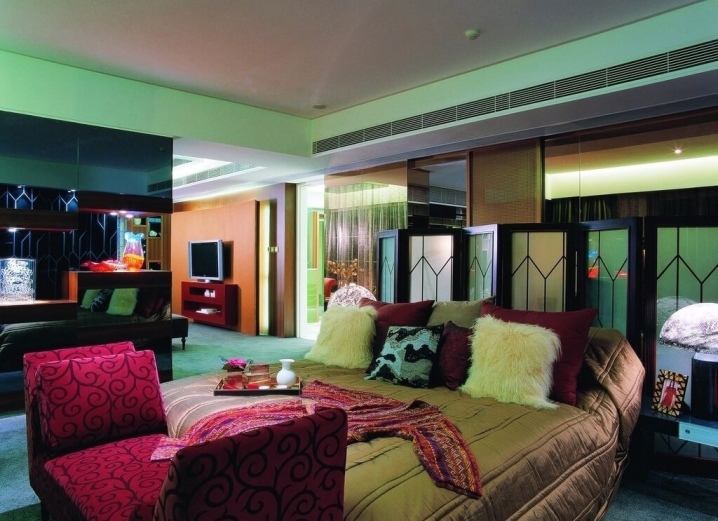
A postmodern bedroom is rarely designed as a separate space. In this case, the arched opening gives the illusion of privacy. Neutral walls are diluted with bright accents, while the room is very bright.
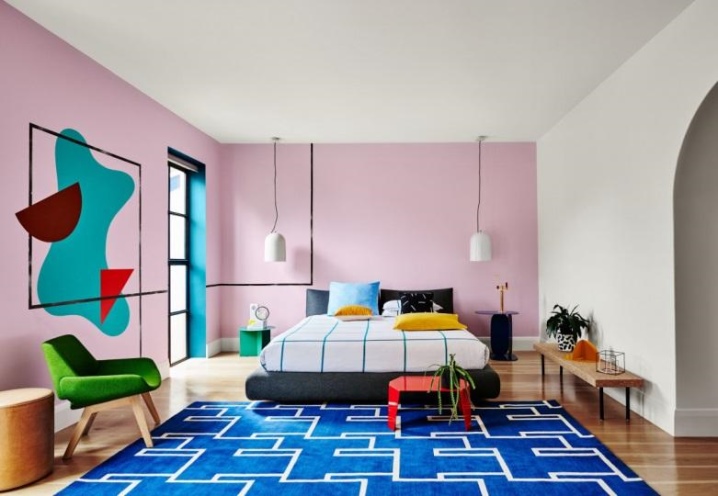
A striking example of geometry characteristic of postmodernism. The interior of the hotel only benefited from such a non-standard approach in design.
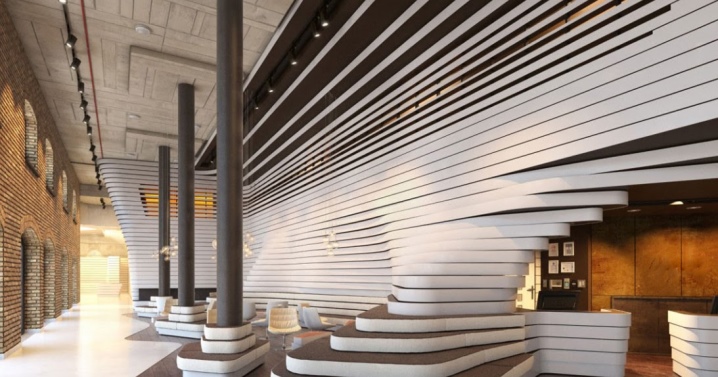
The following video will tell you what postmodernism is in the interior.













The comment was sent successfully.